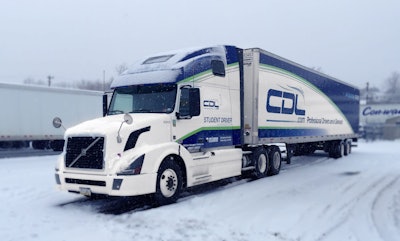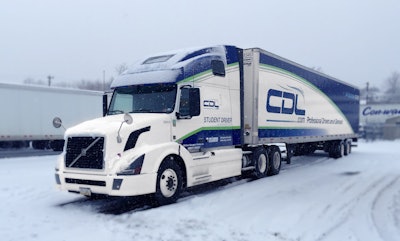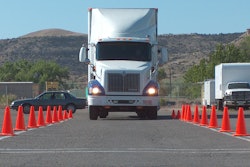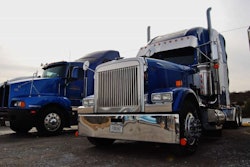
It’s been said that the only things certain in life are death and taxes. We might well add the recurrence of proposals to let 18-20-year-olds drive interstate.
A pilot program’s under way to see how military-trained drivers of that age will do in interstate driving. Now there’s a proposal for a pilot that would allow the same for other younger drivers who fall into one of two categories (comment through Nov. 9 via regulations.gov — docket ID FMCSA-2018-0346-1124). One is CDL holders who take part in 120-hour and subsequent 280-hour probationary periods under an employer’s apprenticeship program. The other is for those who have driven trucks in intrastate commerce for at least a year and 25,000 miles.
 The pilot program would aim to produce data showing whether adequate safeguards could ensure that younger CDL holders can drive interstate as safely as their older counterparts.
The pilot program would aim to produce data showing whether adequate safeguards could ensure that younger CDL holders can drive interstate as safely as their older counterparts.It’s easy to equate youth with recklessness and inexperience. But not all young adults are immature, and any new truck driver, whether 18, 21 or 51, is short on experience. That lack is a key takeaway in a recent study by the Virginia Tech Transportation Institute: “Generally speaking, the first year of driving a CMV is riskier in terms of crash rates, crash involvement, and moving violations, regardless of age.”
The goal of the second pilot would be to get precise safety data in place of assumptions. Some groups objecting to the pilot argue a valid point — that FMCSA should first analyze states’ data on younger CDL holders who’ve been doing intrastate driving, as well as forthcoming data from the military-trained driver pilot. Perhaps those findings would remove the need to bother with yet another pilot.

Among those in support of the new pilot, notably the American Trucking Associations and some of its members, it’s hard not to be jaded over their support for any change that would alleviate their manufactured “driver shortage.” Any change, that is, except better pay. Safety, not inflating the driver market to achieve lower labor costs, needs to be the primary concern here.
In a broader sense, though, there is a legitimate concern for the health of the driver pool and, indirectly, trucking’s image. It’s hard to measure, but it’s long been assumed that some of the better candidates for truck driving – bright, ambitious young adults not inclined toward pursuing a college degree – choose other career paths because they don’t want to wait until they’re 21 before they can drive interstate.
Meanwhile, the driver force, already older than most occupational groups, continues to age even though earnings for company drivers and owner-operators have made good advances. Trucks and the trucking lifestyle have improved in many ways, too.
If data, however it’s gathered, show there are certain criteria that would screen out unsafe younger drivers and provide adequate apprenticeship for the safe ones, it should be considered. If such a change is deemed too risky, let death and taxes have the never-ending stage all to themselves.











